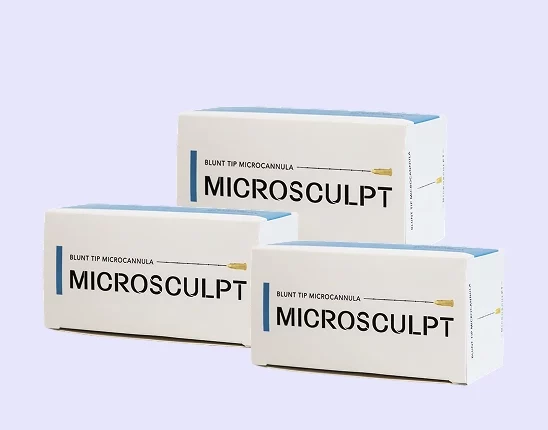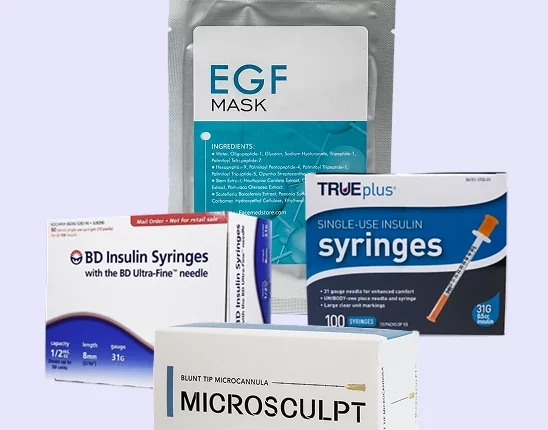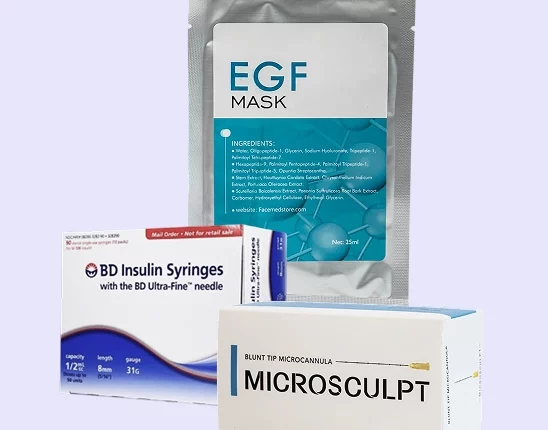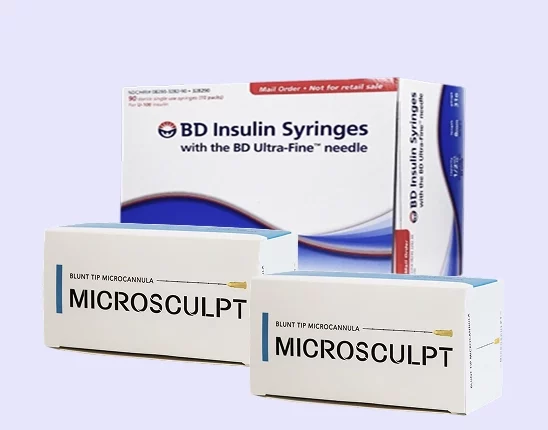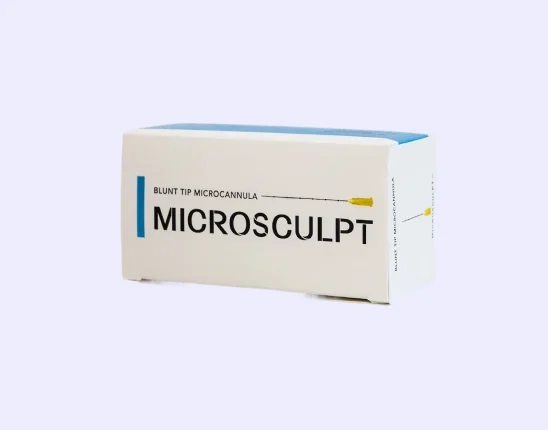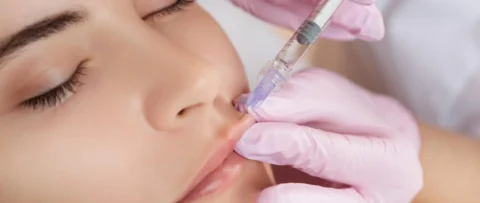Cannula injection is an excellent alternative if a patient is uncomfortable or afraid of the sharp-tipped needle in their procedure. The use of a blunt-tipped cannula has become increasingly popular with treatments like filler injection and liposuction, as it offers several advantages for inserting skin filler and extracting fat from a patient with minimal side effects and complications.
But are cannulas safer than needles outside of their use in those specific circumstances? Because the needle tip of a blunt cannula differs from traditional needles, it has a better safety record for the patient and injector alike. Further adjustments to needle technique can even make it possible to conduct traditionally difficult and risky dermal filler injections without compromising the performance of the soft tissue filler and patient comfort.
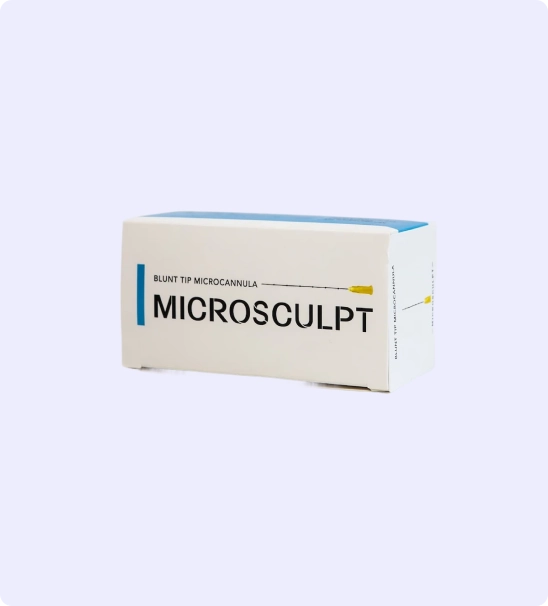
Injections Your Patients Will Love! Code “20OFF” Takes 20% off Your First Order!
Microcannulas are a tool that every great injector must master. Patients want quick results with no downtime. Our microcannulas are high quality and a fraction of the price of our competitors!
You can create an account here.
Why Traditional Needle Use Can Be So Dangerous
A sharp needle is one of the most efficient ways to get to areas deep underneath the skin, but a sharp-tipped needle accomplishes this by brute-forcing its way past tissue. While the sharp bevels of a traditional needle tip can easily pierce through dermal layers, this also increases the risk of puncturing an artery or other delicate areas like the periosteum during intra-arterial penetration.
In contrast, the design of a blunt cannula allows it to efficiently deliver the contents of a syringe to the injection site with minimal trauma compared to a sharp needle, especially with dermal filler. Since filler injection relies on the smooth deployment of the filler material deep within the treatment area, the cannula method can accomplish this without the usual surface and subdermal trauma associated with traditional sharp tip hypodermic needle use.
The cannula technique is particularly useful for filler treatment because the blunt cannula can push instead of piercing its way through the skin. It can effectively nudge its way past any blood vessel and navigate sensitive areas of the face without the risk of bruising or bleeding to the patient. This is particularly useful for filler treatment that involves areas like the nasolabial fold, or certain types of filler injection treatments like a lip filler and tear trough filler.
How the Blunt Microcannula Avoids Common Safety Hazards With Needle Injection
The cannula method has seen plenty of advocates in the medical and cosmetic industry, especially if the goal of the procedure is to keep the patient comfortable without compromising their safety and the efficacy of their treatment.
Here’s how using a blunt microcannula can help improve the safety of any medical or cosmetic procedure:
1. It reduces the chances of needlestick injury
Accidental needlestick injury is one of the most common risks of working with a hypodermic needle, especially if protocols for safe disposal aren’t followed. But even with different safety mechanisms in place, the sharp tip of the needle is an ever-present liability around the workplace. The proper needle technique can mitigate this risk somewhat, but injectors will always have to take extra steps to keep themselves and their patients safe during needle injection.
Cannula injection avoids this problem by having a blunt tip that’s unlikely to penetrate skin or pierce through any disposal container, especially after use. While proper disposal procedures should still be followed even when using a cannula needle, the likelihood of needlestick injuries when using a blunt tip cannula is low.
2. Using a blunt-tipped cannula makes occlusion less likely
Vascular occlusion and intravascular occlusion are some of the common risks associated with using a sharp needle, mainly because the needle design makes it easy for the syringe to pierce then deposit its contents in a blood vessel. For injectable filler, this can turn a simple needle injection of hyaluronic acid filler into a life-threatening complication that can be difficult to manage in a clinic.
The blunt microcannula — and by extension, the cannula method — avoids this issue entirely because the blunt tip pushes its way through the tissue, greatly reducing the risk of puncturing a blood vessel or traumatizing the skin. This makes it an excellent candidate for intravascular injection of injectable filler in areas that are near the facial artery since there’s less likelihood of complications arising from the filler treatment.
3. Microcannula use can offer better control over needle technique
A blunt tip cannula can offer a greater degree of flexibility for the injector without sacrificing patient comfort and safety. A single cannula injection can reach multiple treatment sites, and the cannula technique itself can also mitigate most of the risks associated with needle use like facial artery penetration without compromising the efficacy of the procedure.
This is particularly useful with soft tissue filler use since the rheology of dermal filler injections is crucial to getting ideal results from the procedure. With a greater degree of control over both the needle and distribution of the product in the syringe, cosmetic practices can precisely apply soft tissue filler on areas like the nasolabial fold and the tear trough without worrying about over-application.
Overall, the cannula needle is more efficient to work with, less likely to cause issues like intravascular occlusion, and able to make more difficult medical and cosmetic procedures easier on both the patient and injector.
Get Medical-Grade Blunt Microcannulas and Hypodermic Needles From FACE Medical Supply Today
-
 Microcannula Multi-Gauge Precision Set
Microcannula Multi-Gauge Precision Set -
 Microcannula Complete Injection System
Microcannula Complete Injection System -
 Microcannula Size Progression Training Kit
Microcannula Size Progression Training Kit -
 Microcannula Professional Starter Kit
Microcannula Professional Starter Kit -
 Microcannula Volume Practice Pack
Microcannula Volume Practice Pack -
 23 gauge 50 mm (2 inch) Microcannulas
23 gauge 50 mm (2 inch) Microcannulas -
 22 Gauge 100 mm (4 inch) Microcannulas.
22 Gauge 100 mm (4 inch) Microcannulas. -
 27 Gauge 38 mm (1.5 inch) Microcannulas
27 Gauge 38 mm (1.5 inch) Microcannulas -
 25 Gauge 38 mm (1.5 inch) Microcannulas
25 Gauge 38 mm (1.5 inch) Microcannulas
Using a blunt-tipped cannula can be safer than a traditional needle, but this relies on experience with the cannula technique and familiarity with the procedures that require a cannula needle to accomplish. While the change in the needle tip from the sharp tip needle to the blunt tip cannula can improve the safety of the patient and the injector, it’s important to keep in mind that there are still procedures that work best — and are safer — with a hypodermic needle.
FACE Medical Supply has extensive experience in supplying medical and cosmetic practices tools like the blunt tip cannula and the sharp-tipped needle for dermal filler injections and other treatments. We keep an extensive stock of correspondingly sized needles for every kind of facial treatment and medical injection, with affordable prices that can help practices keep their bottom line while expanding their services.
For more information about us and our products, contact us today.
